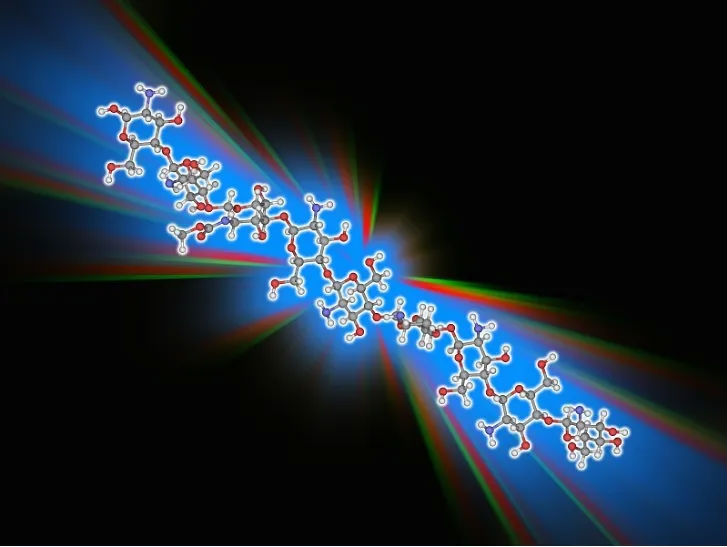Chitosan
Definition: A linear polysaccharide composed of 2-amino-2-deoxybeta-D-glucose linked by alpha-1,4 glycosidic bonds.
Subject: Chemistry, Polymer Chemistry, Polymer Substances
Related terms: polysaccharide biocompatibility, biodegradability, adsorption

Image source of chitosan polymer chain: Visual China
【 Extended Reading 】
Chitosan is a widely present biopolymer in nature, mainly derived from the shells of crustaceans such as shrimp and crabs, as well as the stems and leaves of certain plants and the cell walls of fungi. The basic structure of chitosan is a linear polysaccharide composed of N-acetylglucosamine and glucosamine units, which contains a large number of hydroxyl and amino groups in the molecule. According to the ratio of glucosamine units to N-acetylglucosamine units, chitosan can be divided into low acetylated chitosan and high acetylated chitosan.
Chitosan has the following characteristics: 1. Good biocompatibility, non-toxic, non immunogenic, and has anticoagulant properties, which can prevent blood clotting; 2. Biodegradability, conducive to microbial decomposition in natural environments, and has inhibitory effects on many bacteria and fungi; 3. Adsorption ability, capable of adsorbing various metal ions and organic compounds, especially divalent and trivalent metal ions; 4. It has different solubility in different solvents. For example, it can be dissolved in alkaline solution, but it will form gel in acidic or neutral environment.
The preparation methods of chitosan mainly include chemical and biological methods. Chemical methods mainly include acid-base methods, oxidation methods, reduction methods, etc. The biological principle is to use microbial fermentation technology and genetically modify microbial strains to optimize the production process of chitosan. At present, the preparation of chitosan in China mainly adopts chemical methods, among which the acid-base method is the most widely used. The physical and chemical properties of chitosan can be regulated through various modification methods, such as introducing different functional groups through chemical reactions such as acylation, carboxymethylation, phosphorylation, etc., to enhance its solubility, antibacterial properties, or other specific functions.
As a natural polysaccharide, chitosan has been widely used in fields such as biomedicine, tissue engineering, and food science due to its unique biological properties and diverse application prospects. 1. Chitosan has good biocompatibility and is often used as a surface coating for biomedical materials. It can also promote cell growth and can be used to prepare drug carriers, biomedical materials, sustained-release agents, hemostatic sponges, etc; 2. Chitosan has good preservation, anti-corrosion, and antioxidant properties, and can be used as a food thickener, stabilizer, and excipient to improve the taste and texture of food; 3. Chitosan has a biostimulant effect and can be used as a plant growth regulator in agricultural production to promote plant growth and increase crop yield; Chitosan can purify wastewater by adsorbing and degrading toxic and harmful substances, making it an effective material for environmental treatment; Chitosan and its derivatives have moisturizing, antibacterial, and antioxidant properties and have been widely used in cosmetics.